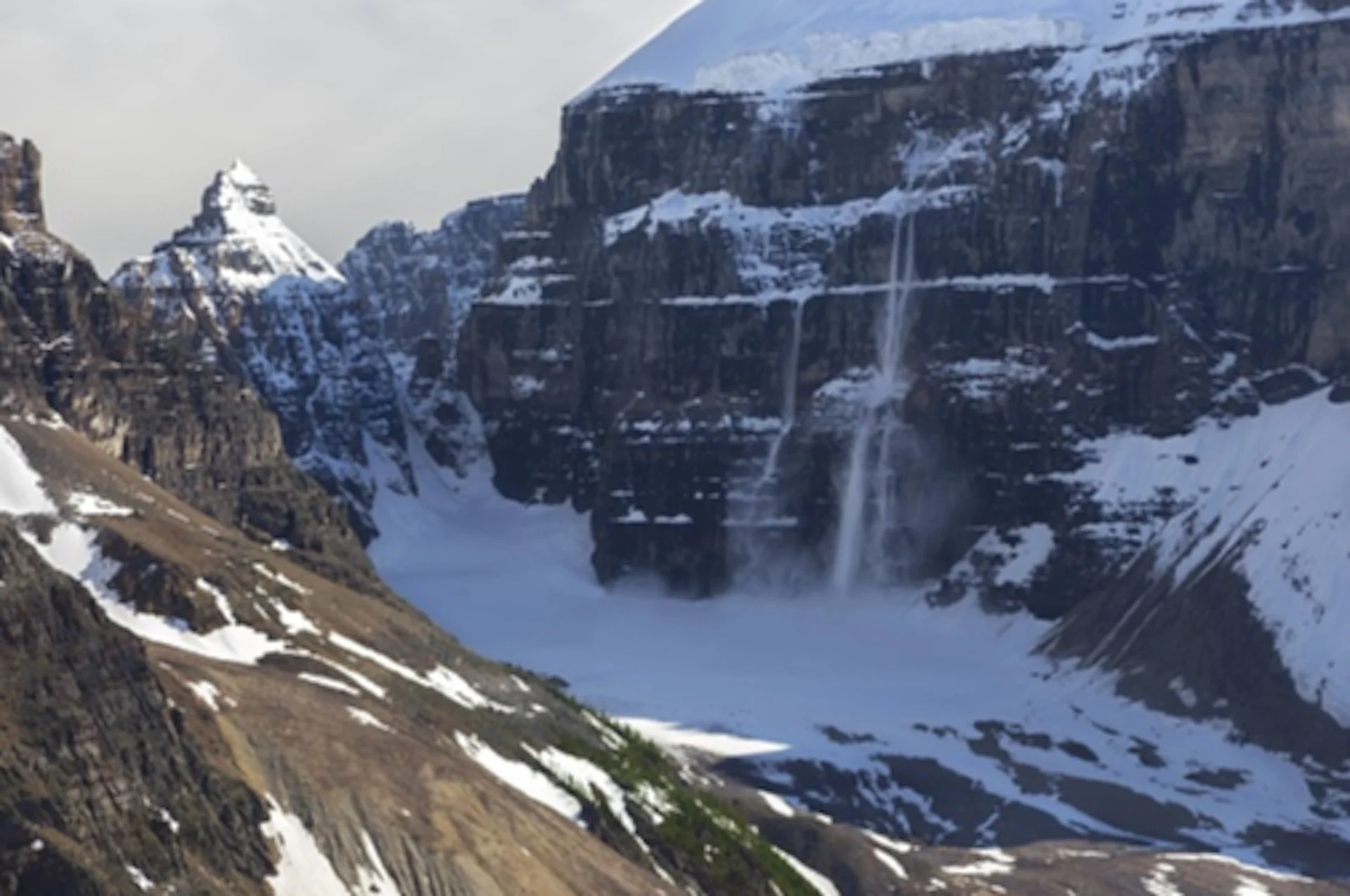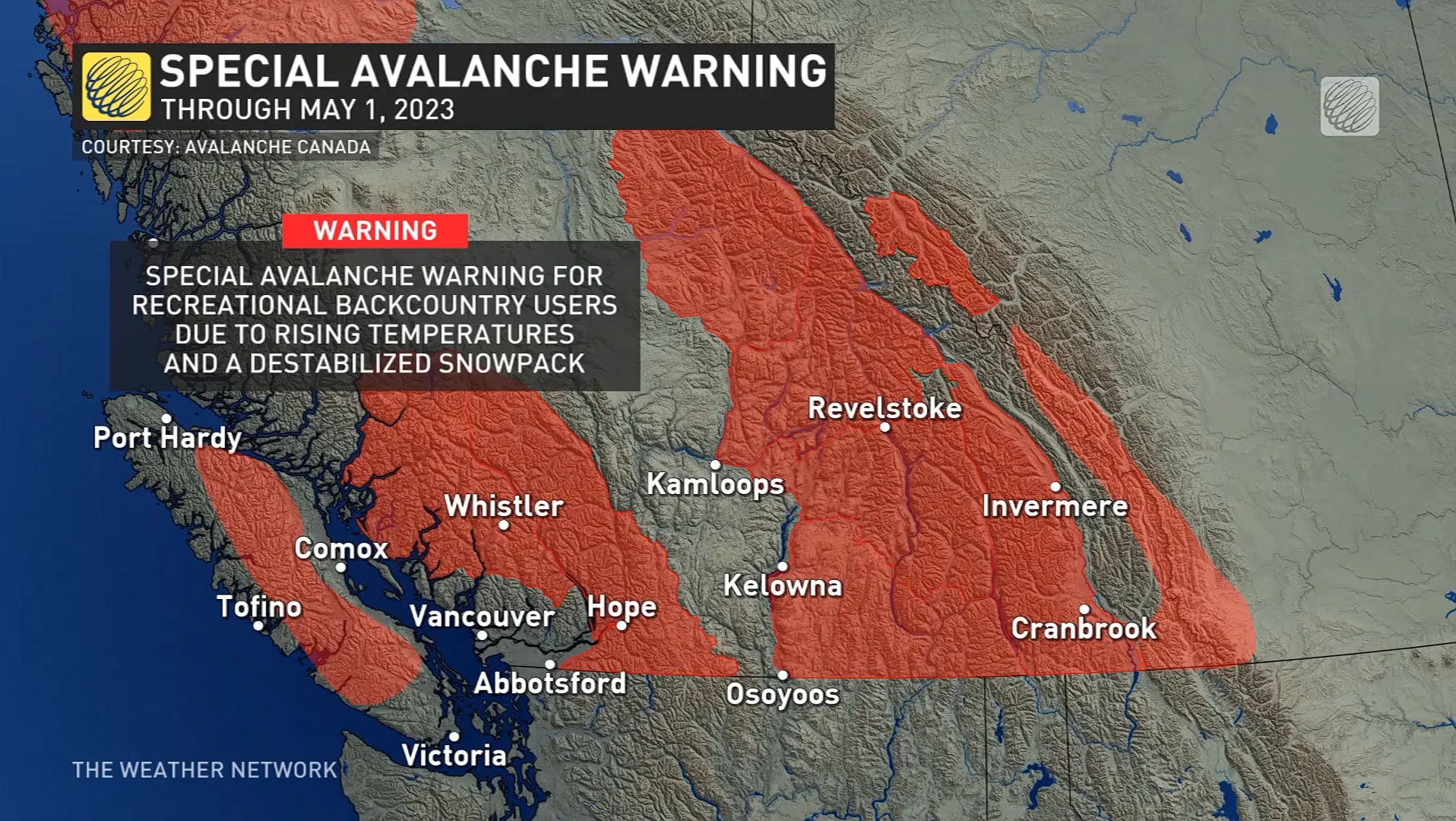
Quick jump into summer-like warmth in B.C. spells avalanche risk
A rising risk for avalanches will span British Columbia in the coming days as temperatures soar.
This will be a good news-bad news situation in B.C. this weekend.
The good: Unseasonable warmth settled in across parts of the province will stick around into early next week, thanks to a strong ridge strengthening over the West Coast.
Now, the bad news: The quick rise into warm temperatures and high freezing levels have destabilized the region’s deep snowpack. This has prompted Avalanche Canada to issue a special public avalanche warning through Monday, May 1, advising that “very large” avalanches are possible as a result of this dramatic warmup.
MUST SEE: What a cold, wet April could mean for B.C.'s wildfire season
Daytime highs will climb firmly into the 20s throughout Metro Vancouver this weekend, with even warmer temperatures expected for the Interior.
In fact, Lytton, B.C., had the honour of grabbing B.C.'s first 30-degree reading in 2023 on Friday. There will be more chances for the Interior to reach it this weekend.

Dangerous avalanche conditions exist for all mountainous regions in Western Canada and the hazard increases with each day of warm air. Regions with persistent or deep persistent slab avalanche problems will be especially problematic, with avalanches potentially involving the full depth of the snowpack.
Freezing levels will rise well above 3000 m throughout southern sections of B.C., elevating the threat for avalanches.
Avalanche Canada's special public avalanche warning, in effect through Monday, May 1, covers most of British Columbia’s mountains from Vancouver Island to the Rockies, then extending north toward the Stikine River. As the snowpack warms, choose more conservative terrain for your backcountry adventures.

DON’T MISS: Atmospheric rivers becoming so intense we need to rank them like hurricanes
The greatest risk for significant avalanches exists across the South Coast and the Interior where forecasters expect the most dramatic warming.
“The effect of the warm temperatures on the existing snowpack structure means that these avalanches will likely be very large and may run to valley bottoms,” Avalanche Canada said in its special public avalanche warning.
Anyone venturing into the backcountry through the duration of this warm spell should exercise extreme caution and avoid regions where avalanches are possible. Avalanche Canada recommends limiting activities to “simple, low angle terrain,” and areas where folks can “avoid all overhead avalanche hazards.”
Thumbnail image courtesy of Getty Images.
Stay with The Weather Network for the latest on B.C.’s warmup and avalanche risk.
